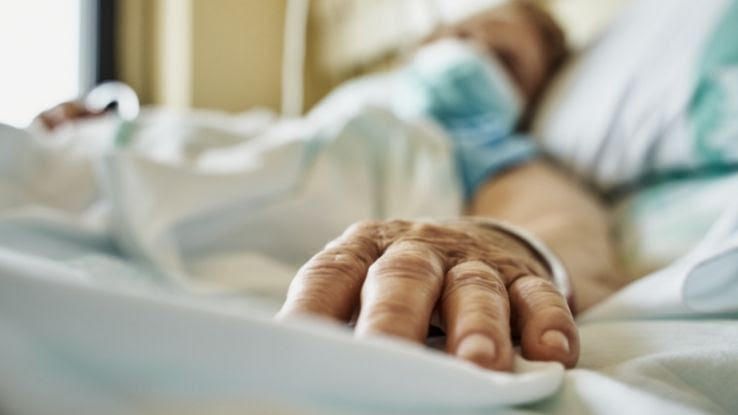Getting My Pacific Prime To Work
Getting My Pacific Prime To Work
Blog Article
The Basic Principles Of Pacific Prime
Table of ContentsThe Best Strategy To Use For Pacific PrimeA Biased View of Pacific PrimePacific Prime - The Facts3 Simple Techniques For Pacific PrimePacific Prime for Beginners

This is due to the fact that the data were accumulated for a duration of strong financial efficiency. Of the approximated 42 million people who were without insurance, just about regarding 420,000 (concerning 1 percent) were under 65 years old, the age at which most Americans end up being qualified for Medicare; 32 million were adults between ages 18 and 65, around 19 percent of all adults in this age team; and 10 million were children under 18 years old, regarding 13.9 percent of all children (Mills, 2000).
These estimates of the number of individuals uninsured are generated from the annual March Supplement to the Existing Population Study (CPS), carried out by the Demographics Bureau. Unless or else noted, national estimates of individuals without medical insurance and percentages of the populace with different kinds of insurance coverage are based upon the CPS, one of the most widely used source of quotes of insurance coverage and uninsurance rates.
What Does Pacific Prime Do?

Still, the CPS is especially valuable because it produces annual estimates fairly promptly, reporting the previous year's insurance coverage estimates each September, and since it is the basis for a constant set of estimates for even more than twenty years, allowing for evaluation of patterns in protection over time. For these factors, in addition to the comprehensive use the CPS in other research studies of insurance protection that are provided in this report, we rely on CPS price quotes, with restrictions noted.

The estimate of the variety of uninsured individuals expands when a populace's insurance coverage status is tracked for numerous years. Over a three-year period starting early in 1993, 72 million individuals, 29 percent of the U.S. http://dugoutmugs01.unblog.fr/2024/04/02/pacific-prime-your-partner-for-comprehensive-insurance-solutions/. population, were without insurance coverage for a minimum of one month. Within a solitary year (1994 ), 53 million people experienced at the very least a month without insurance coverage (Bennefield, 1998a)
Six out of every ten without insurance adults are themselves employed. Although functioning does enhance the possibility that one and one's relative will have insurance coverage, it is not an assurance. Even participants of households with two full-time wage income earners have practically a one-in-ten opportunity of being uninsured (9.1 percent without insurance rate) (Hoffman and Pohl, 2000).
Some Known Factual Statements About Pacific Prime
New immigrants make up a substantial proportion of individuals without medical insurance. One evaluation has associated a substantial portion of the current growth in the size of the U.S. without insurance populace to immigrants who showed up in the nation in between 1994 and 1998 (Camarota and Edwards, 2000). Current immigrants (those that came to the United States within the past 4 years) do have a high rate of being without insurance (46 percent), but they and their children represent simply 6 percent of those without insurance coverage across the country (Holahan et al., 2001).
The connection in between medical insurance and accessibility to care is well developed, as documented later in this phase. Although the relationship in between health insurance policy and wellness results is neither straight neither simple, a considerable scientific and health solutions study literature web links health and wellness insurance protection to better accessibility to care, much better top quality, and enhanced personal and population health status.
Levels of evaluation for examining the results of uninsurance. It focuses especially on those without any health and wellness insurance policy for any type of length of time.
Our Pacific Prime Statements
The troubles encountered by the underinsured are in some respects similar to those faced by the uninsured, although they are normally much less extreme. Health and wellness insurance policy, nevertheless, here are the findings is neither needed neither enough to acquire access to medical solutions. The independent and direct impact of health insurance policy protection on access to health services is well established.
Others will obtain the healthcare they require also without medical insurance, by paying for it out of pocket or seeking it from service providers that offer treatment complimentary or at highly subsidized prices. For still others, health and wellness insurance alone does not make certain receipt of treatment as a result of various other nonfinancial barriers, such as an absence of health treatment service providers in their area, restricted accessibility to transportation, illiteracy, or etymological and cultural distinctions.
The Only Guide for Pacific Prime
Formal research study about uninsured populaces in the United States dates to the late 1920s and early 1930s when the Committee on the Price of Treatment created a series of reports concerning funding doctor office brows through and hospitalizations. This problem came to be salient as the varieties of medically indigent climbed up during the Great Clinical depression.
Report this page